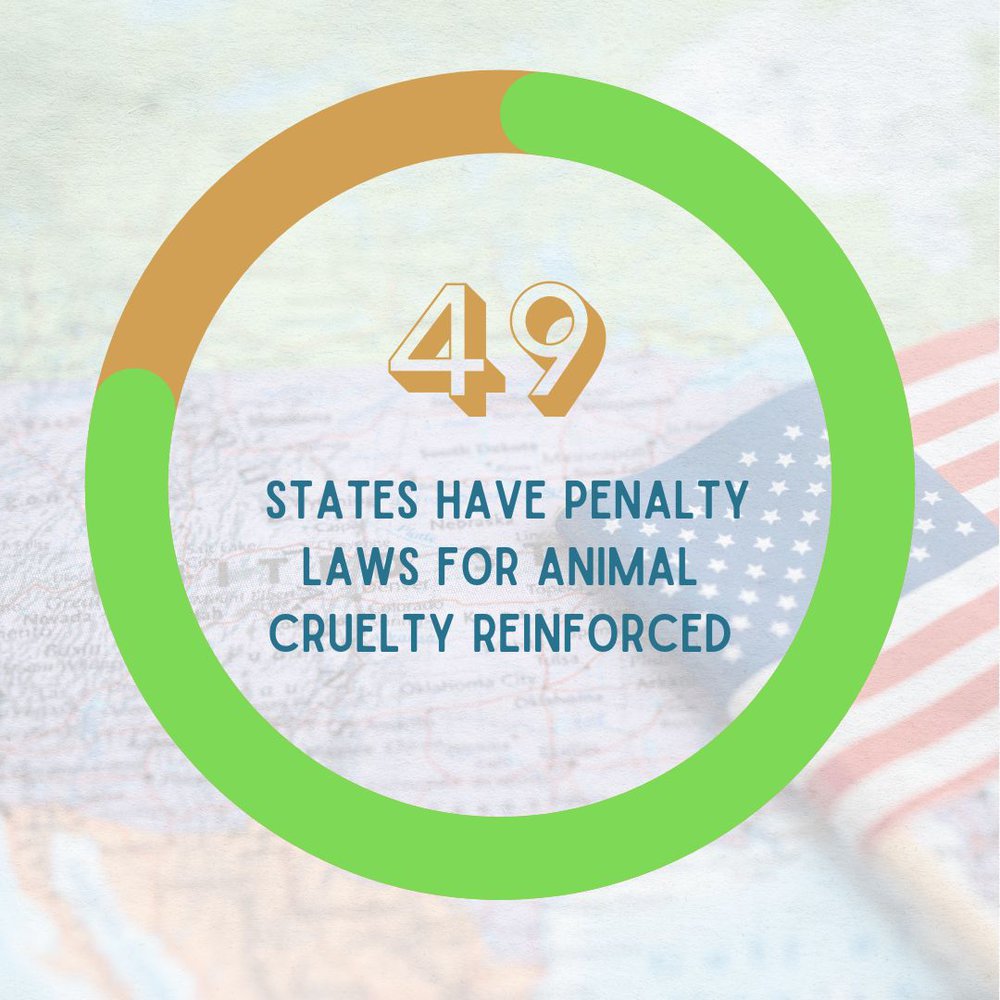In a world where compassion should reign supreme, the specter of animal cruelty looms ominously. It is an unsettling reality that provokes both anger and bewilderment. With myriad forms of cruelty inflicted upon innocent creatures, the pressing question arises: Is animal cruelty a federal offense in the United States? Understanding the legal framework surrounding animal welfare is crucial for those who advocate for the voiceless.
Legally speaking, animal cruelty manifests as a disheartening dichotomy in the United States. Each state possesses its own laws, defining and penalizing acts of violence against animals. These statutes range from the relatively lenient to the harshly punitive. However, while states like California and New York are at the forefront of stringent animal cruelty policies, not all states share the same zeal for protection. The result is a fragmented legal landscape, wherein a crime that could warrant severe ramifications in one locality might barely provoke a raised eyebrow in another.
In this patchwork of legislation, the federal government has historically remained on the periphery. The first significant federal law aimed at curbing animal cruelty was the Animal Welfare Act (AWA) of 1966. Initially designed to regulate the treatment of animals in research laboratories, the AWA laid a foundational framework for federal oversight. Yet, its scope is glaringly limited, as it primarily addresses the welfare of animals bred for commercial purposes, such as those sold for research, exhibition, or as pets.
The shifting tides of public sentiment have prompted some change. In 2019, the Animal Crush Video Prohibition Act strengthened federal law against the production and distribution of video content depicting animal cruelty. This act, while a critical step, illustrates the narrow focus of federal intervention. It shines a spotlight on the abhorrent act of creating entertainment out of suffering, yet fails to address the everyday cruelties faced by animals in less visible contexts—dogfighting rings, puppy mills, and neglectful households.
At the heart of the matter lies the central tension: the legal mechanisms that govern animal cruelty are often inadequate. While federal law provides a semblance of protection, the enforcement rests largely within state jurisdiction. Seldom do we see the federal government intervening unless egregious violations warrant attention. This points to a deeper issue—the systemic undervaluation of non-human life, reflected in legislation that often seems to favor economic interests over the welfare of sentient beings.
So, what implications does this fragmented legal approach have for both animals and advocates? For one, it means that the efforts of animal rights campaigners are often hampered by disparities in local laws. A well-meaning activist in Texas might find the fight against animal abuse particularly daunting, given the lack of robust legislation, while a counterpart in Massachusetts would be bolstered by progressive statutes. This uneven landscape creates a patchwork of animal protection that often leaves the most vulnerable—and least visible—creatures unprotected.
Moreover, the diffuse nature of animal cruelty laws complicates the task of public awareness. Many individuals, unaware of the specifics of animal welfare statutes in their respective states, may unknowingly contribute to systemic abuse. For instance, unwittingly supporting businesses that exploit animals in inhumane ways perpetuates the cycle of violence. In this way, knowledge becomes a powerful tool; one need only look to grassroots campaigns that raise awareness about local issues to see the transformation that information can catalyze.
Nevertheless, hope springs eternal. Numerous animal advocacy organizations actively work to raise awareness and push for comprehensive reforms at both the state and federal levels. Champions of the cause argue for a strong federal mandate that transcends state lines—an overarching standard that ensures each creature, regardless of geography, is afforded protection from cruelty. Such initiatives require a collective effort, underscoring the urgency for public engagement and legislative reform.
This collective responsibility extends beyond mere advocacy. It invites society to reevaluate its ethical stance towards animals, challenging the prevailing notion that their lives hold lesser worth. Each act of compassion, whether adopting a shelter pet, opposing inhumane practices, or simply educating oneself about animal rights, contributes to a larger movement. In the grand tapestry of social justice, the fight against animal cruelty stands as a poignant thread that connects us all.
As society shifts towards a more progressive understanding of animal rights, legal instruments must evolve in tandem. The challenge lies in lobbying for legislative change, galvanizing public sentiment, and fostering awareness. It is not merely a question of legality, but of humanity. As we strive for a world that values kindness and respect, it becomes paramount to elevate the protection of animals to federal stature—a recognition not just of law, but of a moral imperative.
In conclusion, while animal cruelty remains largely a battle fought on state soil, the desire for systemic change echoes loudly. Advocates, activists, and compassionate individuals must unite as a formidable force for reform. The path is fraught with complexity, but through collaboration and education, a brighter future for our animal companions is within reach. The question remains: will we take up the mantle and champion the rights of those who cannot advocate for themselves?







